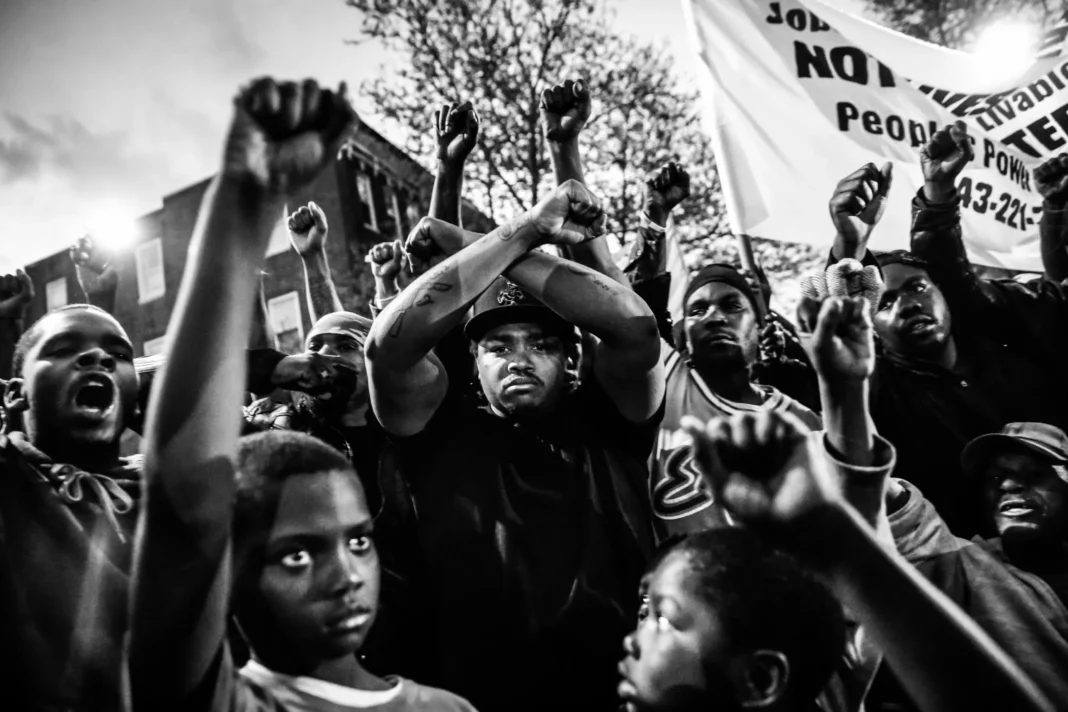In 2015, the city of Baltimore was rocked by a series of protests and demonstrations in response to the tragic death of Freddie Gray, a 25-year-old African American man who died while in police custody. The incident sparked a wave of national outrage and galvanized the Black Lives Matter movement, bringing issues of police brutality and systemic racism to the forefront of public consciousness.
The events that unfolded in Baltimore were a microcosm of the larger issues facing black communities across the country. Freddie Gray’s death was not an isolated incident, but rather one in a long line of police killings of unarmed black men and women. It was a tipping point for a community that had long been suffering from systemic oppression and injustice.
The protests in Baltimore were a powerful and necessary response to the systemic racism and police brutality that has plagued our country for far too long. They were a cry for justice and a demand for change. The people of Baltimore, and those who joined in solidarity from around the nation, were determined to make their voices heard and bring attention to the urgent need for reform.
The protests began peacefully, with thousands of people marching through the streets of Baltimore, chanting and holding signs that read “Black Lives Matter” and “Justice for Freddie Gray.” But as tensions rose and frustrations boiled over, some protests turned violent. Buildings were set on fire, stores were looted, and clashes with police erupted.
While the violence was certainly not condoned, it was a symptom of the deep-rooted anger and frustration felt by the community. For many, it was a last resort after years of being ignored and marginalized. It was a desperate cry for help and a demand for change.
But amidst the chaos and destruction, there were also moments of hope and unity. Community leaders, activists, and ordinary citizens came together to clean up the streets and rebuild what had been destroyed. They showed that even in the face of adversity, the people of Baltimore were resilient and determined to create positive change.
The protests in Baltimore sparked a wave of national demonstrations and solidarity, with people from all walks of life joining in the fight against police brutality and systemic racism. The Black Lives Matter movement gained momentum and became a powerful force for change, shining a light on the injustices faced by black communities and demanding accountability from those in power.
The impact of the Baltimore protests was felt far beyond the city’s borders. It sparked important conversations about race, privilege, and the role of law enforcement in our society. It also put pressure on politicians and lawmakers to address the systemic issues at play and work towards meaningful reform.
In the years since the Baltimore protests, there have been some positive changes. Police departments have implemented new training and policies to address issues of bias and excessive force. There has also been a greater focus on community policing and building trust between law enforcement and the communities they serve.
However, there is still much work to be done. The deaths of George Floyd, Breonna Taylor, and countless others have shown that police brutality and systemic racism are still pervasive issues in our society. The fight for justice and equality continues, and the events in Baltimore were a pivotal moment in that ongoing struggle.
The city of Baltimore may have been the epicenter of the protests, but the impact was felt across the nation. The people of Baltimore showed incredible courage and resilience in the face of adversity, and their actions sparked a movement that continues to push for change and demand justice for all. The events of 2015 will forever be remembered as a turning point in the fight against police brutality and systemic racism, and a reminder that when we come together, we can create real and lasting change.


